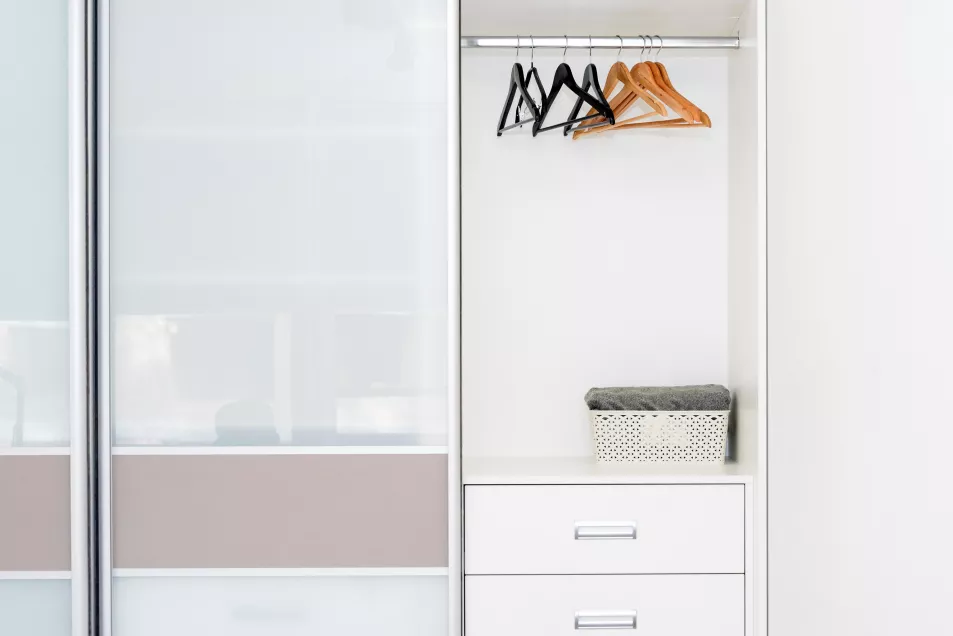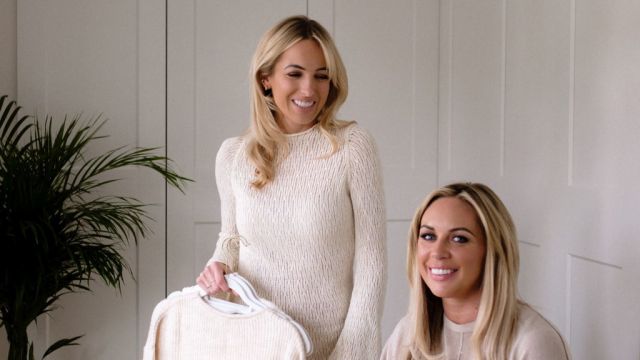Suffering from wardrobe woes? Can’t keep track of what you have, or there are piles of pre-loved items languishing in the back of the cupboard waiting to see the light of day?
“We regularly find wardrobes can become a real dumping ground,” says Charlotte Reddington, one half of Style Sisters (@stylesisters), experts in de-cluttering and organising.
“The fact you can simply shut the doors on the space can lead to a messy and unorganised wardrobe.”
View this post on Instagram
Advertisement
“When you feel good in what you’re wearing, it automatically puts you in a better mood,” says Reddington. “The space needs to be practical, but ultimately it should be somewhere that inspires you, with easy-to-choose and find outfits.”
It may sound simple, but she says they can’t sing the praises of a wardrobe detox highly enough, and that it will help with a range of issues, from “feeling less stressed first thing in the morning, to avoiding unnecessary purchases”.
Here, Style Sisters share some practical styling, design and storage tips to organise, refresh and make the most of what you have…
Free up space – the detox
“To start your wardrobe spring clean, you’re going to have to get everything out,” says Gemma Lilly, other half of the duo. “Sometimes this is the only way to truly do a deep cleanse.”

No matter how big your wardrobe, the same rules apply: “If you aren’t going to wear it, it needs to go,” says Lilly. “Your wardrobe should be a place for clothes you love and actually wear.”
Freeing up space from things that have just become clutter will make getting ready easier, she notes. “And means those unused items can go to a home where they will be enjoyed and loved.”
They recommend doing a wardrobe detox twice a year, so it never gets to the stage where you dread opening the doors, and helps to keep things organised.
Timing it around the change in seasons is perfect, suggests Lilly. “So you can access the pieces you want to wear – and have them within easy reach.”

“Our tried and tested system for a detox is to create four piles – keep, give, sell, get rid,” says Lilly.
As you go through each item, the piles provide a place to put them and gives a visual of the detox process. “And that might inspire you to start being a little more ruthless,” she adds.
Utilise every inch of space
Even in the smallest of spaces, there’s a chance for hidden storage.
“In the wardrobe, use over-door organisers to make the most of the backs of wardrobe doors,” suggests Lilly. “These can either be clipped over the top of doors or screwed into place with small hooks.”

“They make a good place for shoes, slippers, scarves or smaller accessories.” With lots of different styles and colours to match your decorating scheme, she says designs with a transparent window are helpful. “As you can easily see what’s inside – and find what you need.”
If you have a free-standing wardrobe, Lilly says to make the most of the top of it, which would otherwise be dead space. “Suitcases are an ideal place to store items you won’t need until the next seasonal switchover.
“Items like chunky knit jumpers can take up lots of space, so storing them away for the seasons you don’t need them, like spring and summer, will give you more hanger and drawer space.”
If you prefer keeping suitcases out of sight, she suggests using fabric storage boxes. “Keep things neat and neutral by choosing matching or complementary tones to blend seamlessly with the rest of the room.”
Matching hangers
This is a simple switch, but one that will make a big difference…

“Whenever we are detoxing a wardrobe, we always recommend changing the hangers,” says Reddington.
“Opting for one style of hanger will instantly give the space a uniform look, making it feel streamlined.”
She continues: “Velvet hangers are also a space-saving solution. Slimmer than chunky wooden ones, they allow you to fit three hangers to every wooden one, doubling the amount of clothes in your closet!”
A good trick to see what clothes you’re actually wearing is to turn all the hangers in the same direction, when you put everything back in the wardrobe, reveals Reddington.

“Once you wear an item and put it back, place the hanger back the opposite way,” she says. “In six months’ time, it will be easy to see what clothes haven’t been worn – and make a decision as to whether it’s time to donate or sell them.”
Switch up the layout
Even ready-built wardrobes can be modified to ensure they are working to suit your needs, says Lilly.
“There are lots of wardrobe accessories that won’t require any drilling – fabric hanging shelves are a favourite of ours. They provide extra compartments to fold and group garments together.”

When you’re grouping items together, she says to think about your everyday living habits to make the process as productive as possible.
“If your main hobby is running or going to the gym, activewear needs to be easy to see and access. Hanging shelves are a great space for lightweight items like gym leggings and sports tops, making it easy to quickly see what you might be running low on – and what items might need to be prioritised in the washing pile.”







